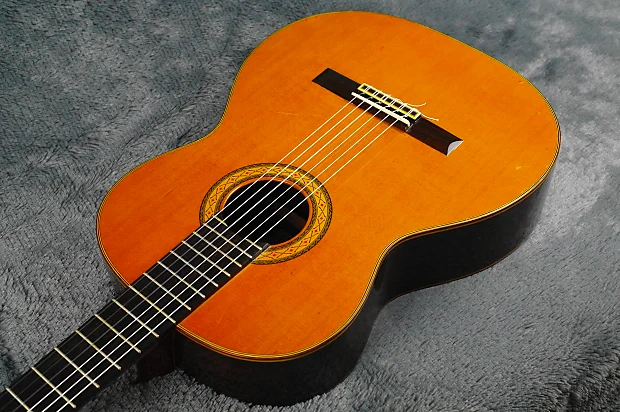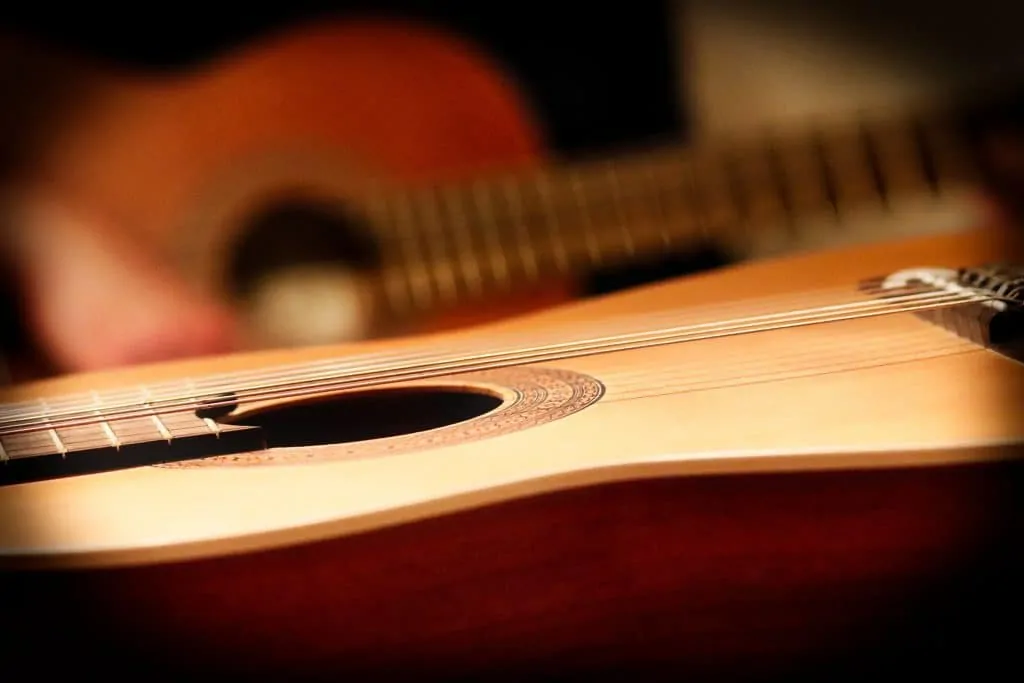Are you in the market for a new guitar and wondering if a solid top is worth the investment? Look no further, because I’ve got all the answers you need! As someone who has been playing guitars for years, I know how overwhelming it can be to choose the perfect one. So, let me use my expertise to help guide you through this decision process and find the best solid top guitar for your needs.
In this comprehensive guide, we’ll discuss everything from what exactly a solid top guitar is and why it’s important, to different types of tonewoods used and their impact on sound quality. We’ll also dive into budget considerations, as well as tips for beginner players looking to invest in their first guitar. By understanding all these key factors, you’ll have all the knowledge necessary to make an informed decision that will result in a beautiful sounding instrument that will last you years. Are you ready to find your perfect solid top guitar? Let’s get started!
So, Do you need a solid top guitar?
It ultimately depends on your personal preference and playing style. Solid top guitars are known for their rich, warm tone and durability, making them a popular choice among musicians. However, there are also many high-quality laminate top guitars that offer great sound at a more affordable price point.
If you’re a beginner or looking for a budget-friendly option, a laminate top guitar may be the way to go. They can handle changes in temperature and humidity better than solid tops, which is important for maintaining the instrument’s overall quality.
On the other hand, if you’re an experienced player or looking to invest in a long-term instrument, a solid top guitar may be worth considering. The natural resonance of the wood creates a unique sound that only improves with age and proper care.
Ultimately, it’s important to try out different types of guitars and see what feels best for you. Consider factors such as your playing style, budget, and desired sound when making your decision. With our guide and some hands-on experience, you’ll be able to find the perfect guitar that suits your needs perfectly.
Understanding Solid Top Guitars: What They Are and Why They’re Important
When you’re looking for a quality guitar, you might hear about “solid top” guitars. But what exactly does that mean? Simply put, a solid top guitar has a soundboard made from a single piece of wood rather than multiple layers glued together. This may seem like a minor detail, but it makes all the difference in the world. The way this single piece of wood vibrates allows for richer and more nuanced tones. As you strum or pluck the strings, you’ll notice enhanced resonance and sustain that laminated tops often can’t achieve.
The importance of having a solid top goes beyond just how it sounds today; it’s also about how it’ll sound years down the line. Wood is an organic material that continues to mature over time. With solid tops, as they age and are played more frequently, they tend to open up beautifully, producing even better sound qualities with each passing year. Many musicians appreciate this evolving character because their instrument grows with them. So if you’re considering investing in a new guitar or upgrading your current one, opting for a solid top might be one of the best decisions you’ll make.
– Richer & nuanced tones
– Better resonance & sustain
– Improves with age
Exploring the Different Tonewoods Used in Solid Top Guitars and Their Impact on Sound Quality
When you strum a solid top guitar, the wood it’s made from can significantly impact the sound. Each type of tonewood has its own unique characteristics that contribute to how the instrument resonates and sings. For example, spruce is one of the most popular choices for guitar tops because it offers a bright, clear tone with excellent projection. This makes it ideal for players who want their music to carry across larger spaces or cut through in a band setting.
On the other hand, cedar provides a warmer, richer sound with more midrange emphasis. This tonewood is often favored by fingerstyle players who appreciate its responsiveness to a lighter touch and intricate playing techniques. Another noteworthy option is mahogany; this wood delivers a balanced tonal output with good sustain and volume, making it suitable for various musical styles.
Different woods bring different flavors to your playing experience:
- Rosewood: Known for deep basses and sparkling highs.
- Maple: Offers clarity and brightness without being overly shrill.
- Koa: Combines warmth with vibrant trebles.
These choices enable musicians to find an instrument that perfectly complements their personal sound preferences.
So next time you’re trying out guitars, pay close attention not just to how they look but also how each one feels under your fingers—and listen closely!
Read also: What is the history of the Yamaha APX Guitar Series

Price Considerations: How to Find a Great Solid-Top Guitar Within Your Budget
Finding a great solid-top guitar that fits your budget can be quite the adventure. To start, it’s important to understand what makes a solid-top guitar special compared to other types. A solid top is made from one piece of wood and tends to produce richer, more resonant sound than laminated options. This quality often comes at a higher price point, but don’t worry—there are gems out there that won’t break the bank.
When hunting for an affordable gem, keep these tips in mind:
- Research brands: Some manufacturers offer excellent-quality instruments at lower prices simply because they’re less well-known.
- Check materials: Look for guitars made with spruce or cedar tops; these woods are known for their sound qualities.
- Play before you pay: If possible, visit music stores and test guitars in person to feel which one resonates with you.
Don’t shy away from used guitars either—they can often provide better value. Many players sell barely-used instruments when upgrading or changing styles. Make sure to inspect any pre-owned guitar thoroughly: check for cracks, warping, and ensure all parts function smoothly.
Lastly, consider online reviews and forums where seasoned musicians share their insights on various models within different price ranges. You might stumble upon recommendations you hadn’t considered otherwise. Balancing cost with quality doesn’t have to be daunting if you’re armed with knowledge!
Guidance for Beginners: Tips on Solid Top Guitars for First-Time Purchasers
Stepping into the world of guitars can feel overwhelming, especially when faced with the choice between different types. Solid top guitars, however, are a fantastic place to start for first-time buyers. These instruments stand out because their tops are made from solid pieces of wood rather than laminated layers. This gives them a richer, fuller sound that improves as the guitar ages and is played more often.
When searching for your first solid top guitar, focus on certain key aspects:
– Wood Type: Spruce and cedar are popular choices for solid tops. Spruce offers bright tones while cedar delivers warmer sounds.
– Body Shape: From dreadnoughts to parlors, each shape affects how comfortable it feels in your hands and its tonal properties.
– Brand Reputation: Companies like Yamaha or Taylor have beginner-friendly options known for quality.
It’s also essential to consider comfort and playability alongside sound quality. Try holding different models at a store if possible; this will give you an idea of what feels best in your arms.
Another tip: don’t just rely on online reviews—while helpful, personal experience matters most! Checking intonation (how well notes stay in tune up and down the neck) is crucial too; even beginners need an instrument that stays true across all frets.
In essence, investing time in finding a suitable solid top guitar paves the way for enjoyable playing sessions ahead!
You may also like: Casio CDP-S360 Digital Piano
Conclusion: Making an Informed Decision in Selecting Your Perfect Solid Top Guitar
Choosing the right solid top guitar can feel like diving into an ocean of options. Each instrument has its own unique voice, influenced by the type of wood used for its top. Premium woods like spruce and cedar are popular choices due to their resonant qualities. Spruce, in particular, is known for its versatility and bright tone, making it a favorite among many players regardless of their music style. Cedar offers a warmer sound which is often preferred by fingerstyle guitarists seeking rich, mellow tones.
When you’re in a store or browsing online looking at solid top guitars, pay attention not just to the material but also to how it feels in your hands. Is the neck comfortable? Does it seem well-balanced when you hold it? Don’t hesitate to strum a few chords or pluck some strings—you want an instrument that speaks to you both aurally and physically. Here’s a little tip: bring along someone who knows guitars if possible; they might notice things you could miss on your own.
– Wood Types: Spruce vs Cedar
– Playability: Neck comfort matters
– Sound Testing: Always play before buying
Ultimately, selecting your perfect solid top guitar means blending personal preference with informed choice—balancing sound, feel, and aesthetics to find ‘the one’.

